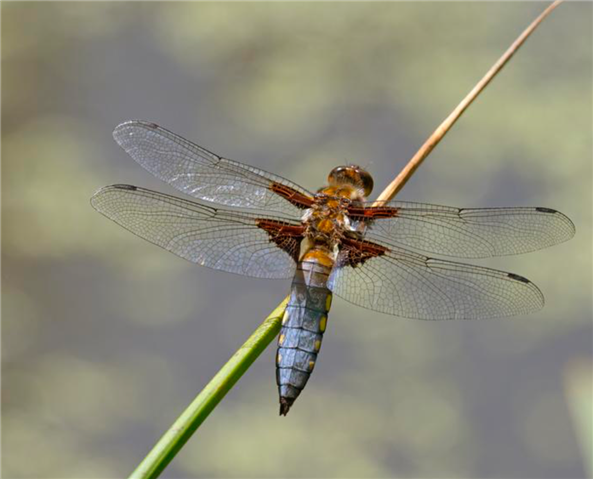Dragonflies can begin to emerge as early as April. In the UK, we have 36 Species of Dragonfly and 21 species of Damselflies, both from the insect order Odonata.
 Male Broad-bodied Chaser Dragonfly: Ernie Janes (rspb-images.com)
Male Broad-bodied Chaser Dragonfly: Ernie Janes (rspb-images.com)
Two ways to tell the difference are with regard to wings and eyes: at rest, Damselflies have their wings upright, as butterflies do when they rest on a flower but dragonfly wings are left open, horizontal…